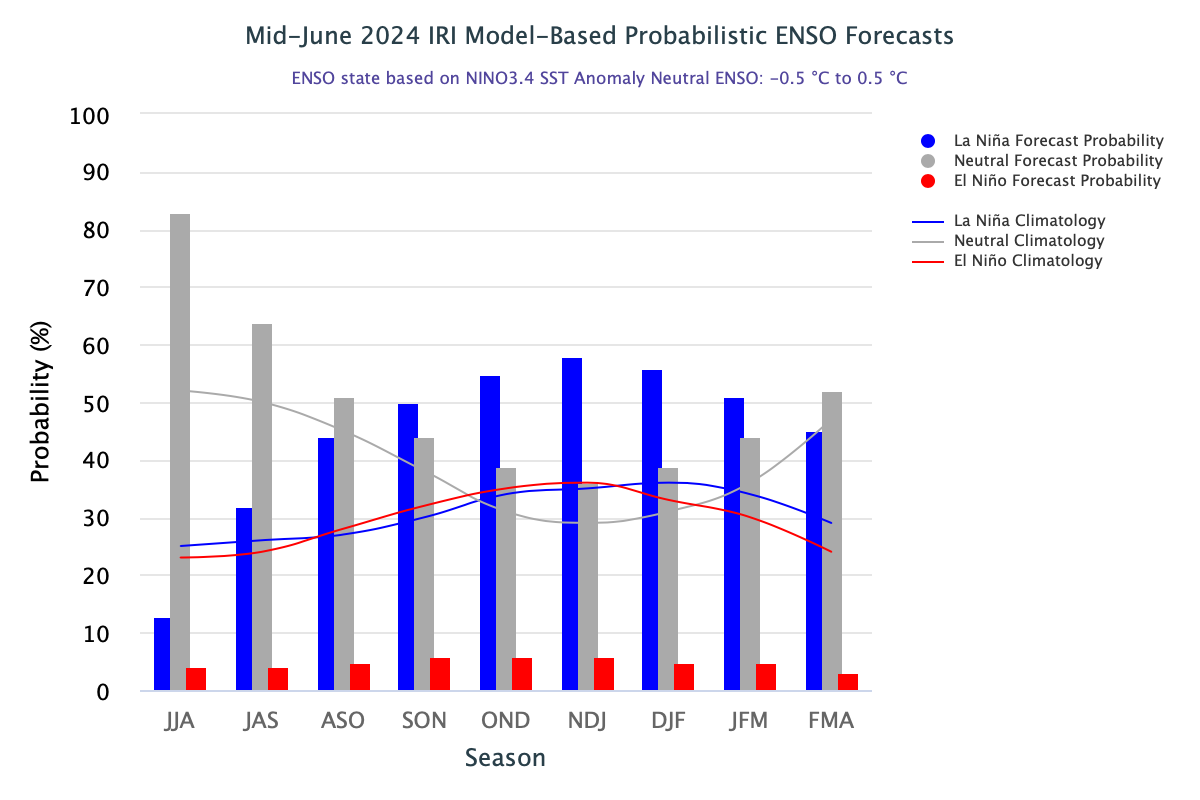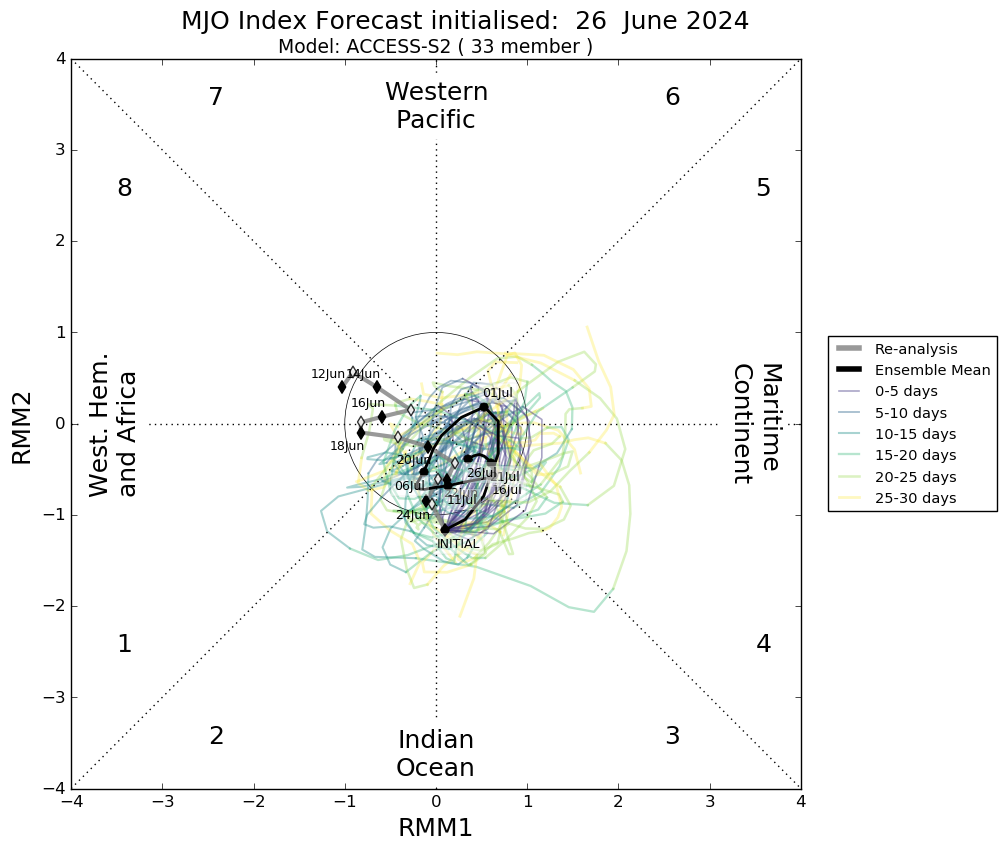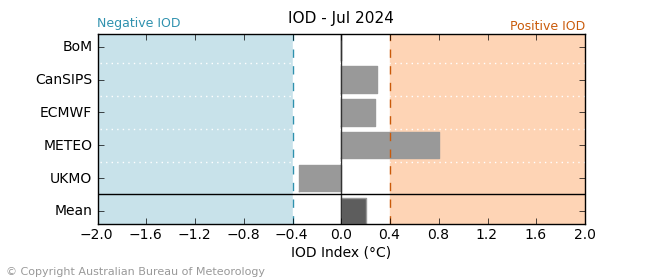
The El Nino event is ending. The Oceanic Nino Index (ONI) is likely to drop below the threshold mark of 0.5°C. The ONI is based on the SST departure from average in the Nino 3.4 region, and is a principal measure for monitoring, assessing and predicting ENSO. For the quarter Mar-Apr-May, the ONI was 0.7°C. Sea surface temperature (SST) in the Nino 3.4 region have dropped to nearly zero degree for three weeks in June. ONI for the quarter Apr-May-Jun is likely to be around 0.45°C, marginally below the threshold mark. It may be construed that El Nino has ended and ENSO neutral has commenced. However, as seen in the past, El Nino hangover remains for few weeks, even after its devolution. And, that keeps troubling the weather conditions around the globe, including Indian monsoon.

ENSO: As of mid-June 2024, waning El Nino conditions persist only in the western equatorial Pacific Ocean, while the other oceanic and atmospheric indicators are aligned with ENSO neutral conditions. ENSO outlook forecasts indicate ENSO-neutral conditions for Jun-Aug 2024 and La Nina thereafter. Rate of cooling of SST seem to have slowed, since last few weeks. The International Research Institute (IRI) definition of El Nino, like NOOA/Climate Prediction Center, require that the monthly SST anomaly in the Nino 3.4 region ( 5°S-5°N: 170°W-120°W) exceed +0.5°C. Similarly, for La Nina, the anomaly must be -0.5°C or colder. The latest anomaly of Nino 3.4 region, as on 24thJune 2024 was +0.3°C, a significant rise from its last week mark of zero-zero. The Nino 3.4 region is refusing to concede defeat and continue to yield resistance. The SST and thermocline need to be sufficiently cool for La Nina to get going through the monsoon season.

Ocean and atmospheric conditions across the tropical Pacific are suggestive of ENSO-neutral conditions. While, the equatorial Southern Oscillation Index had an average value of 0.5 for the month of May 2024, the 30 day Southern Oscillation Index, as of last week, stands within the ENSO-neutral range. The trade winds in the lower levels are now normal across the tropical Pacific. The sub-surface temperature anomalies have turned marginally negative and extended westward in the equatorial Pacific Ocean. All these factors in the coupled ocean-atmosphere system indicate a return of ENSO-neutral conditions in the equatorial Pacific.

IOD: The Indian Ocean Dipole is currently neutral. The latest IOD index for the week ending 23June 2024 was -0.09°C. Most models suggest that IOD is likely to remain neutral during the monsoon season. The IOD plot has nearly reversed from its earlier prediction of becoming sufficiently positive through the monsoon season. The index seems to have collapsed and is unlikely to lift beyond zero-zero in the core monsoon months of July and August. Though the predictability of IOD is low at this time of the year but the dwindling trend sounds apprehensive on its constructive role for enhancing monsoon rainfall. It is feared that, La Nina may not be in consonance with IOD, to trigger adequate monsoon bursts, at times, when these are needed the most.

MJO: The Madden Julian Oscillation is currently weak, with amplitude confining to the inner circle. It is expected to remain weak till first week of July. An uptick is expected during 2nd and 3rd week of July over the Maritime Continent and Indian Ocean. Indian seas are likely to become more responsive to the monsoon system during second half of July.

Southwest monsoon has wavered substantially in the opening month of June. Earlier, countrywide rainfall deficiency climbed to 19% and now marginally recovered to pull it back to 14% as on 28thJune 2024. Monsoon current is expected to pick up pace and may cover the entire country, ahead of its schedule, for the second consecutive year. Core monsoon months of July and August need to perform to negate the set back of June. La Nina, as such is evolving late in the season, at best in the second half of the monsoon. Indian Ocean Dipole is unlikely to underpin and collude constructively with La Nina. The chances of having a bumper monsoon remain irresolute, without the solid succor of MJO.




